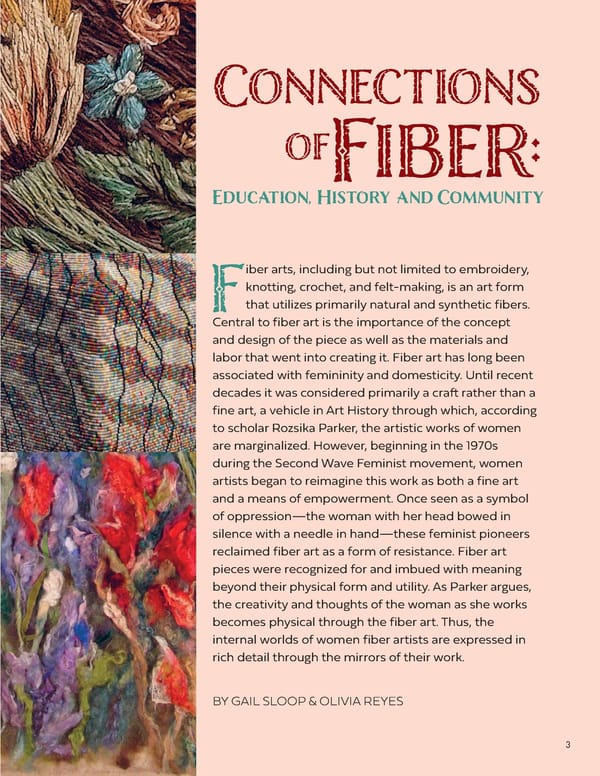Connections of : Fiber Education, History and Community iber arts, including but not limited to embroidery, knotting, crochet, and felt-making, is an art form Fthat utilizes primarily natural and synthetic fibers. Central to fiber art is the importance of the concept and design of the piece as well as the materials and labor that went into creating it. Fiber art has long been associated with femininity and domesticity. Until recent decades it was considered primarily a craft rather than a fine art, a vehicle in Art History through which, according to scholar Rozsika Parker, the artistic works of women are marginalized. However, beginning in the 1970s during the Second Wave Feminist movement, women artists began to reimagine this work as both a fine art and a means of empowerment. Once seen as a symbol of oppression—the woman with her head bowed in silence with a needle in hand—these feminist pioneers reclaimed fiber art as a form of resistance. Fiber art pieces were recognized for and imbued with meaning beyond their physical form and utility. As Parker argues, the creativity and thoughts of the woman as she works becomes physical through the fiber art. Thus, the internal worlds of women fiber artists are expressed in rich detail through the mirrors of their work. BY GAIL SLOOP & OLIVIA REYES 3
 June 2021 Oklahoma Hall of Fame Magazine Page 4 Page 6
June 2021 Oklahoma Hall of Fame Magazine Page 4 Page 6